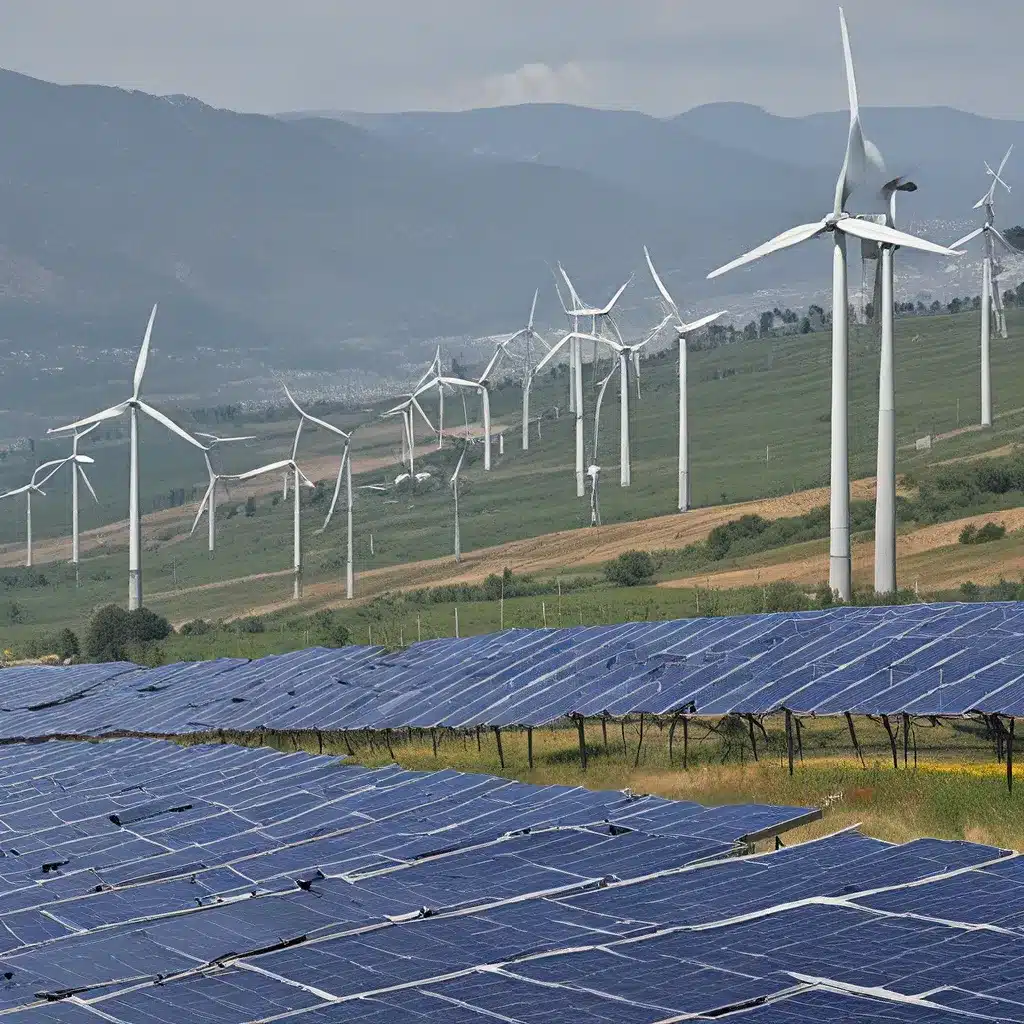
As someone deeply fascinated by the rapid transformation of our energy landscape, I can’t help but feel a sense of excitement and anticipation when I think about the role of renewable energy in shaping the future of our power grid. It’s a complex and ever-evolving story, with twists and turns that keep me on the edge of my seat.
You see, the traditional power grid was designed around the idea of centralized generation – a handful of large power plants churning out electricity and delivering it to customers almost immediately. But as we’ve embraced the wonders of solar, wind, and other renewable sources, the grid has had to adapt. And let me tell you, it’s been quite a ride!
Navigating the Challenges of Grid Integration
One of the biggest challenges we’ve faced is the intermittent nature of renewable energy sources. When the sun isn’t shining or the wind isn’t blowing, those clean kilowatts can suddenly disappear, leaving us scrambling to maintain a reliable supply. That’s where energy storage technologies come into play – pumped hydroelectric, batteries, flywheels, and even futuristic metal-air systems.
The US Government Accountability Office has highlighted the potential benefits of these storage solutions, noting that they could help utilities meet demand during supply disruptions, recover faster after outages, and support renewable energy by storing power when nature is feeling generous and releasing it when she’s not.
But here’s the kicker – integrating these storage technologies onto a grid that wasn’t designed for them can be a real headache. As the California Independent System Operator has discovered, balancing supply and demand is a constant dance, and sometimes they have to curtail renewable generation just to keep the lights on.
Regulatory Challenges and Policy Options
And it’s not just the technical challenges – the regulatory landscape can be a minefield too. As the GAO report points out, there are varied state rules and regulations to navigate, and that can make it a real challenge to get storage projects off the ground.
But fear not, my friends – the policymakers are on the case. The GAO has identified a toolkit of policy options to help address these challenges, from setting clear goals and next steps for grid integration, to revising rules and requirements around storage, to providing incentives and support for manufacturing and adoption.
It’s an exciting time, to be sure. As the National Renewable Energy Laboratory has highlighted, energy storage technologies are evolving rapidly, and their use is growing alongside the rise of solar and wind power. And with the right regulatory framework in place, I believe we can harness the full potential of these clean energy sources and create a grid that’s more resilient, reliable, and sustainable than ever before.
Embracing the Renewable Revolution
Of course, it’s not all sunshine and rainbows. The transition to a renewable-powered grid is bringing its own set of challenges, from the need for new transmission infrastructure to the complexities of managing grid resiliency in the face of extreme weather events.
But you know what they say – where there’s a will, there’s a way. And I, for one, am convinced that we have the will, the ingenuity, and the determination to make it happen. After all, the stakes are high – a stable, reliable, and carbon-free power grid is essential for our future prosperity and the health of our planet.
So, let’s dive in, shall we? Let’s explore the regulatory implications, the policy options, and the technological advancements that are shaping the future of our energy system. Because if there’s one thing I know for sure, it’s that the renewable energy revolution is just getting started, and the best is yet to come.
Ongoing Research and Evolving Conclusions
Of course, as with any complex topic, there’s still a lot we don’t know. The research is ongoing, and the conclusions are likely to evolve as new data and insights emerge. Some experts believe that certain storage technologies, like flow batteries and metal-air systems, have great potential for longer-duration applications, but there is debate around their practical viability and scalability.
And let’s not forget the potential impact of electrification on the grid. As more and more sectors, from transportation to buildings, turn to electricity as their primary energy source, the demand for clean, reliable power is only going to grow. The California ISO suggests that this trend, combined with the increasing frequency and intensity of extreme weather events, is putting significant strain on the system and may require even more innovative solutions.
So, while I’m optimistic about the future, I also know that there’s a lot of work to be done. But that’s the beauty of it – the challenges we face are complex, and the solutions will require creativity, collaboration, and a willingness to think outside the box. And isn’t that what the renewable energy revolution is all about?

